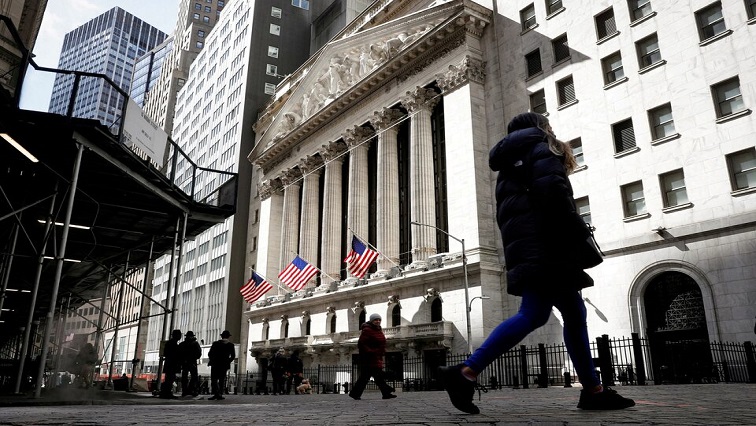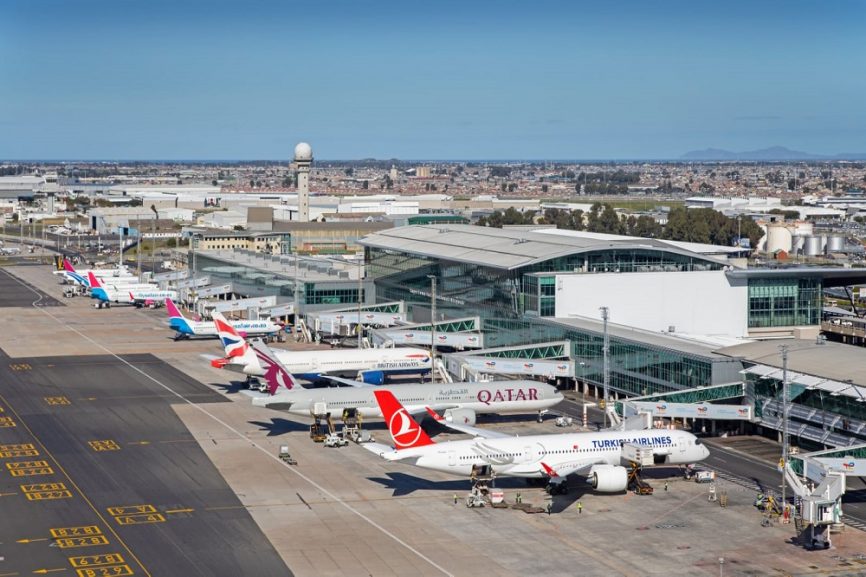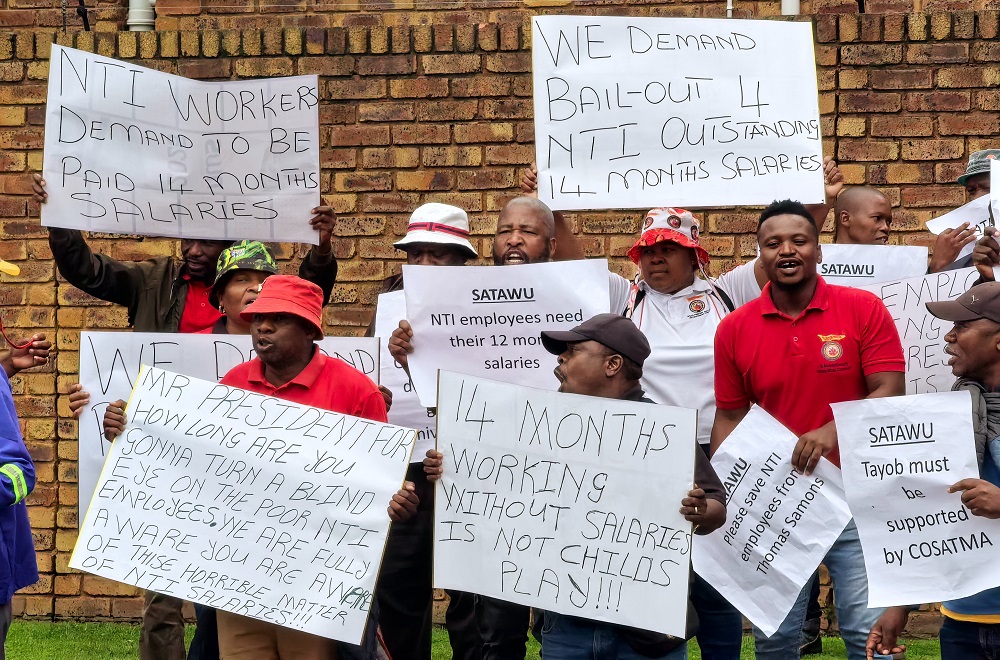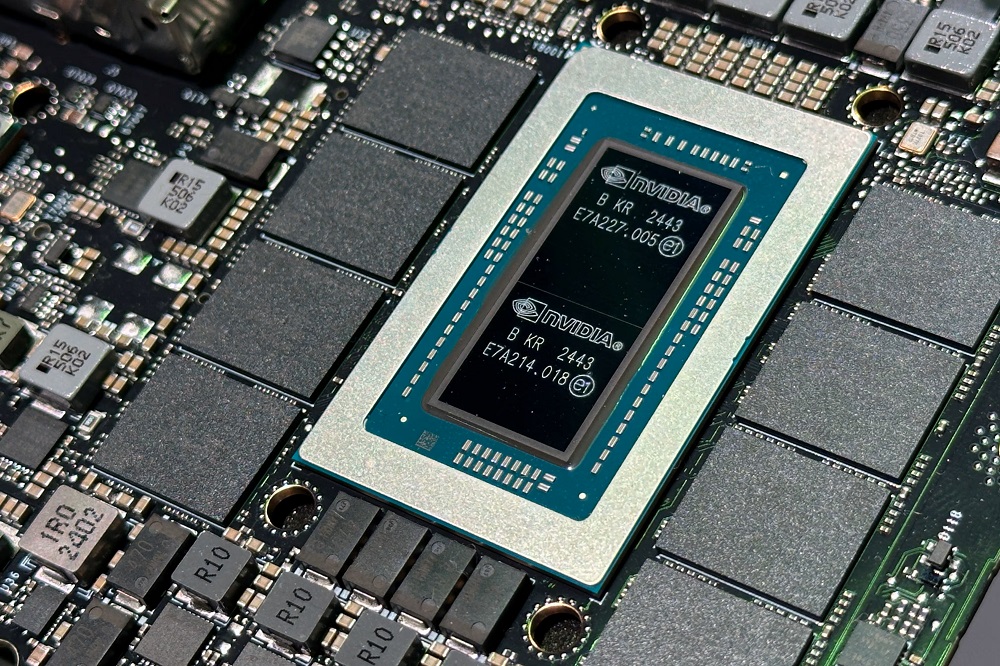-
People are seen on Wall Street outside the New York Stock Exchange (NYSE) in New York City, US, March 19, 2021.
Wall Street has ended higher after a choppy trading session, with Dell Technologies dipping and other tech stocks climbing after a meeting between the US President Donald Trump and Ukrainian counterpart Volodymyr Zelenskyy ended in disaster.
Zelenskyy and Trump traded verbal blows at the White House before the world’s media on Friday. This created fresh uncertainty over Ukraine’s war with Russia for investors already worried about sticky US inflation and a tepid economy.
The S&P 500 moved lower immediately after the clash before recovering and ending the day with a gain.
Zelenskyy left the White House without signing a much-vaunted deal between Ukraine and the US over the joint development of natural resources.
“The news, if you watched it live, it was pretty worrisome. It got heated, and Zelenskyy is considered an ally of the US,” said Adam Sarhan, chief executive at 50 Park Investments.
“That’s why the market sold off, but then cooler heads prevailed. Zelenskyy either is going to make a deal or he’s not.”
Dell dropped 4.7% after the PC maker forecast a decline in its adjusted gross margin rate for fiscal 2026.
Peer HP Inc fell 6.8% after its quarterly profit forecasts missed expectations.
Nvidia and Tesla rose almost 4% each and lifted the S&P 500.
The S&P 500 climbed 1.59% to end the session at 5 954.50 points.
The Nasdaq gained 1.63% to 18 847.28 points, while the Dow Jones Industrial Average rose 1.39% to 43 840.91 points.
Volume on US exchanges was heavy, with 17.5 billion shares traded, compared to an average of 15.4 billion shares over the previous 20 sessions.
All 11 S&P 500 sector indexes rose, led by financials, up 2.1 percent, followed by a 1.8% gain in consumer discretionary.
For the week, the S&P 500 fell about 1 percent, the Nasdaq lost 3.5% and the Dow climbed almost 1%.
The Nasdaq lost about 4% for all of February, its deepest monthly loss since April 2024. The S&P 500 fell 1.45% for the month and the Dow lost 1.6%.
Earlier, a Commerce Department report showed inflation rose in January in line with expectations. However, consumer spending, which accounts for more than two-thirds of the economy, dropped 0.2% after an upwardly revised 0.8% increase in December.
This could complicate the Federal Reserve’s deliberations on monetary policy.
“Spending came in lower than we were looking for… most of it I would attribute to a cooling economy, which presents a dilemma for the Fed in the sense that you still have inflation and you have an economy that is moving lower. If you add them together, that equals stagflation,” said Peter Cardillo, chief market economist at Spartan Capital Securities.
Friday’s report is important for investors trying to gauge the next move for the central bank after policymakers reiterated a hawkish stance. Investors worry Trump’s policies, especially trade restrictions, could exacerbate US inflation.
“Tariff talk certainly is having a negative effect on the stock market, and it probably will keep a lid on stock market advances until there’s more clarity around that,” said Sam Stovall, chief investment strategist at CFRA Research.
Traders see the Fed lowering borrowing costs twice by December, little changed from before the report, according to data compiled by LSEG. Investors will assess comments from Chicago Fed President Austan Goolsbee later in the day.
The CBOE Volatility Index, also known as Wall Street’s fear gauge, touched a one-month high and was last up at 21.26 points.
Advancing issues outnumbered falling ones within the S&P 500 by a 7.1-to-one ratio.
Related video | Discussion on Trump, Zelenskyy clash:









